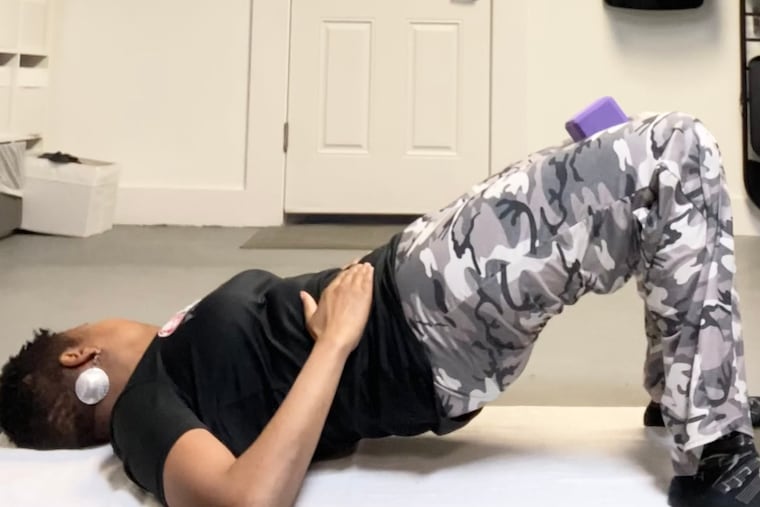Pelvic floor fitness is an issue after childbirth and with age. It requires more than kegels.
How do you improve or maintain pelvic floor strength? Some women may consult a physician or physical therapist who specializes in pelvic floor issues. Others may find improvement in these exercises.

When women start working out, we mostly think about toning and strengthening our legs and backs, tightening our bottoms, and getting ripped abs and arms. With age, we start thinking about keeping our joints in optimal working order. But what about the muscles and tissues we may not see, but certainly can feel, especially when things go wrong?
The pelvic floor spans from the pubic bone in the front of the pelvis to the tail bone in the back and is comprised of connective tissue, ligaments, and muscles whose main job is to hold all the pelvic organs in place. Men have a pelvic floor, too, but women are more prone to problems because theirs must be far more flexible to cope with the demands of pregnancy and childbirth.
But pelvic floor weakness and ensuing problems such as prolapse, incontinence, and abdominal muscle separation (diastasis recti) can also be the result of a hysterectomy, chronic constipation, or even heavy lifting with incorrect form. The way that we sleep, sit upright, hold sneezes in, or even hold our breath can affect the pelvic floor’s balance and symmetry. As we age, the connective tissue weakens, another contributing factor.
After having three children, I had diastasis recti and leaked a little urine when I sneezed or coughed. I’m thankful that my active lifestyle helped me overcome these problems, and I learned that vigilance is key for prevention. But too many women suffer in silence because they assume such problems are normal after childbirth.
Signs that you need to begin paying more attention to the pelvic floor include persistent constipation; pain in the lower back, hips and abdominal muscles; urinary incontinence; even a pulling sensation in the pelvis — although all can have other causes, too, so you should go to your doctor for an evaluation.
When you do, you’ll likely learn that what you have is completely treatable.
So, how do you improve or maintain your pelvic floor strength? Some women may need to consult a physician or physical therapist who specializes in treating pelvic floor issues. Others may find improvement through the following exercises, along with such overall healthy habits as walking regularly, avoiding incorrect lifting practices, and avoiding straining on the toilet. With all these movements, remember that it’s important to move mindfully, and always breathe consistently in through your nose and out through your mouth. Never hold your breath.
Pelvic floor contractions
Sit upright in a chair, knees hip-width apart, feet flat on the floor. Cross your arms and raise them, framing your ribs. Inhale and feel your rib cage expand. Exhale and slightly squeeze inward with your hands as your ribs close and relax. Do this again and imagine that you are sitting on the toilet, trying to hold back your stream of urine. As you breathe out, contract your vagina and anus as tight as you can without clenching your buttocks. Hold it and count to five then relax. repeat 10 more times. It is important to perform this exercise daily to see results.
Lie on your back on the floor or bed. Bend your knees, holding a yoga block, small ball or cushion between them, with your feet flat. Place hands on sides of your lower abdominal muscles. Breathe in and allow the rib cage to expand. Exhale and sink your belly button toward the floor.
Repeat, and as you exhale, lift your tailbone and do the same contraction as above. Repeat 10 times.
Sit upright in a chair, feet hip width apart and flat on the floor. Fold your arms. Slightly lean forward from the hips and contract your vaginal muscles as if trying to stop urinating. Meanwhile, lift your bottom about six inches from the chair. Hold for a count of 10, then put your bottom down and relax. Repeat 10 times.
You can do these daily at any time. Add one or more of these exercises to your regimen to see an improvement in your pelvic floor strength.
Yvonne Ferguson Hardin (Fergie) is the owner of Fergie’s Instructional Training FIT in Germantown, and specializes in helping older adults maintain and improve wellness.